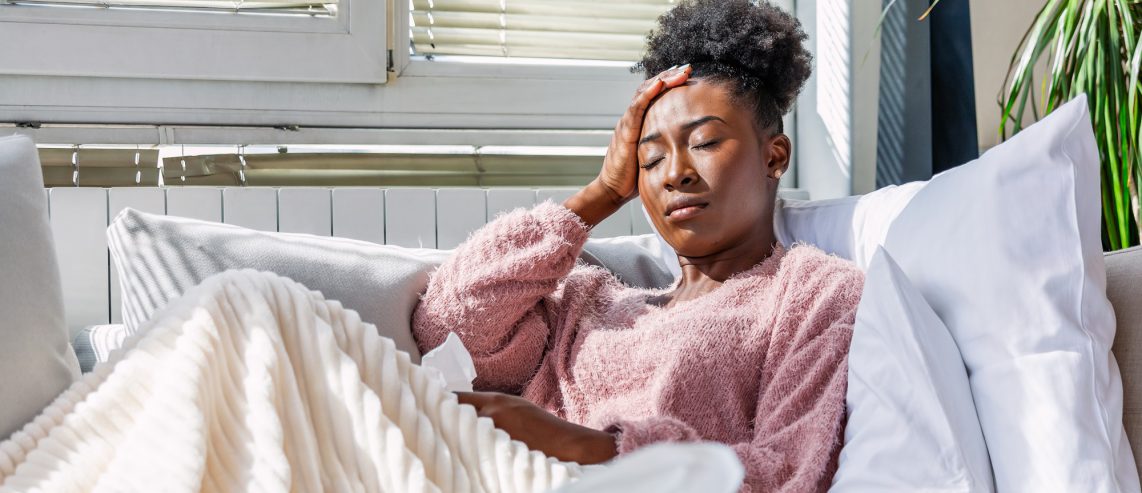Note: As of December 2022, UPMC will now refer to “monkeypox” as “mpox.” This decision comes after recommendations from the World Health Organization (WHO) and Centers for Disease Control and Prevention (CDC).
The infectious disease mpox, formerly known as monkeypox, began spreading worldwide in 2022 — including in the United States. Mpox has similar but less severe symptoms than smallpox. It can cause a flu-like syndrome and most commonly a painful rash that may appear on many different parts of the body.
According to the Centers for Disease Control and Prevention (CDC), you should call your doctor if you notice a new, unexplained rash with or without other symptoms.
Here’s what to know about mpox symptoms.
When Do Monkeypox (Mpox) Symptoms Appear?
The World Health Organization says mpox symptoms typically appear within six to 13 days after exposure. But it could take more or less time for symptoms to appear.
The virus most readily spreads through close physical contact with someone who is infected. This contact includes skin-on-skin contact or touching an object that contacted the body fluids or sores of an infected person. It also can spread through prolonged respiratory contact with someone who is infected.
Animals infected with mpox also can spread it to humans through contact.
Never Miss a Beat!
Subscribe to Our HealthBeat Newsletter!
Thank you for subscribing!
You can now select the specific newsletters you'd like to receive.
You are already subscribed.
Subscribe to more newsletters in our email preference center.
Sorry, an error occurred. Please try again later.
Get Healthy Tips Sent to Your Phone!
What Does a Monkeypox (Mpox) Rash Look Like?
A painful rash is the most common symptom of mpox. It can look like a sore, a pus-filled bump on the skin, a blister, or even a pimple. Mpox lesions are often itchy or painful.
The rash can appear in many different places on the skin. According to the CDC, common locations for mpox rashes include:
- Genitals (penis, testicles, labia, or vagina).
- Anus.
- Hands.
- Feet.
- Chest.
- Face.
- Mouth.
The rash can appear in multiple places on the body at the same time. Lesions go through several different stages before scabbing over and healing.
What are other monkeypox (mpox) symptoms?
Besides a rash, mpox can cause several other symptoms. Other common mpox symptoms include:
- Fever or chills.
- Swollen lymph nodes.
- Fatigue.
- Headache.
- Muscle pain.
- Back pain.
- Sore throat.
- Nasal congestion.
- Cough.
- Bloody stools.
- Rectal pain.
- Rectal bleeding.
The order that symptoms appear can vary from person to person. Some people may experience the rash first followed by other symptoms, while others may feel symptoms before the rash appears. Others may only get the rash.
What Should I Do If I Have Monkeypox (Mpox) Symptoms?
Call your doctor if you begin to experience an unexplained rash or other symptoms of mpox.
Until you get checked out, the CDC says, you should remain isolated and refrain from close contact with other people and animals. If you are around others, wear a facemask that covers your nose and mouth and cover your rash if you have one.
Even if you don’t have symptoms, you should call your doctor if you recently had prolonged close contact with someone who has suspected or confirmed mpox. You may be eligible for a mpox vaccine.
There are no specific treatments for mpox, but doctors may use antiviral medications for smallpox because of the diseases’ similarities.
How Long Do Monkeypox (Mpox) Symptoms Last?
Mpox symptoms can last up to two to four weeks. You have not fully healed until all of your scabs fall off and a new layer of skin has formed. Until that happens, you still are contagious and can spread mpox.
Until you are fully healed, you should stay isolated and refrain from close contact with others. If you are around other people, wear a mask that covers your nose and mouth and cover up your rash.
If there are others in your household, they also should take prevention precautions. Those include wearing a facemask, washing their hands frequently, and avoiding contact with you and with items you may have touched.
Editor's Note: This article was originally published on , and was last reviewed on .
Sources
American Academy of Dermatology Association, Dermatologist Explains What the Monkeypox Rash Looks Like. Link
Centers for Disease Control and Prevention, About Monkeypox, Frequently Asked Questions. Link
Centers for Disease Control and Prevention, Monkeypox, Clinical Guidance, Clinical Recognition. Link
Centers for Disease Control and Prevention, Monkeypox, Signs and Symptoms. Link
About UPMC
Headquartered in Pittsburgh, UPMC is a world-renowned health care provider and insurer. We operate 40 hospitals and 800 doctors’ offices and outpatient centers, with locations throughout Pennsylvania, Maryland, New York, West Virginia, and internationally. We employ 4,900 physicians, and we are leaders in clinical care, groundbreaking research, and treatment breakthroughs. U.S. News & World Report consistently ranks UPMC Presbyterian Shadyside as one of the nation’s best hospitals in many specialties and ranks UPMC Children’s Hospital of Pittsburgh on its Honor Roll of America’s Best Children’s Hospitals. We are dedicated to providing Life Changing Medicine to our communities.
